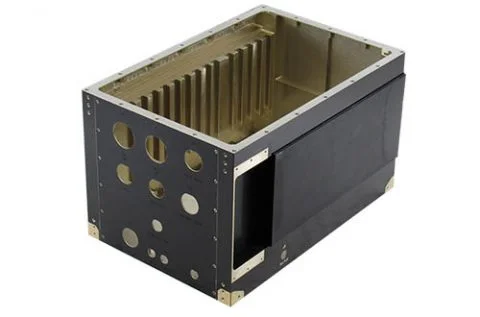Heat Frames & Chassis
Brochures
pdf - 1.88 MB
pdf - 1.4 MB
pdf - 547.31 KB
pdf - 1.6 MB
pdf - 1.48 MB
pdf - 1.82 MB
pdf - 6.49 MB
Technical Documents
xlsx - 64.96 KB
pdf - 2.86 MB
pdf - 844.14 KB
pdf - 1.16 MB
pdf - 1.31 MB
-
Ruggedized heat frames and chassis
Ruggedized heat frames are precision machined out of aluminum or copper material and provide a low resistance path for heat flow from the circuit board to the heat sink. The heat frame offers structural reinforcement for high shock and vibration applications.
Mersen's conduction-cooled chassis are designed for rugged applications that require optimal thermal dissipation. The chassis are high-precision machined boxes that provide a cold wall to cool and support heat frames without the need for a heat sink. Conduction-cooled, liquid-cooled, and air-cooled options are available.
How It Works
The structure of our chassis and heat frames allows for an ideal heat exchange process. The card slots within a chassis hold the heat frames that PCB boards attach to. The heat frame provides the following functions:
- Provides rigid support and structure to the PCB board against shocks, such as the vibrations in an airplane
- Interacts with the chassis and utilizes conduction cooling to cool down the PCB board
Heat frames are made from aluminum and copper and are typically anodized to provide a protective cover.
There are several different types of heat frames, but the most common are:- Welded
- Dip Brazed
- Gasketed
- Vacuum Brazed
- Embedded Heat Pipes
While all of the above are great options, we most commonly utilize dip brazing at Mersen for heat frame and chassis uses. This process is carried out using molten salt (salt that has been heated to a temperature rendering it liquid). The parts are dipped in the molten salt and joined together. When cooled, this process provides some of the strongest results with the least likelihood of joint fracture because the material essentially become one.
